In 1946, a short story called “Loophole” first appeared in the pages of Astounding Science Fiction magazine. The tale was penned by a promising young writer named Arthur C. Clarke—and its publication marked the launch of an extraordinary literary career.
Over 70 years later, Arthur C. Clarke’s star still shines brightly in the sci-fi universe. The pioneering author and Prophet of the Space Age was a defining voice of mid-20th century science fiction, crafting stellar space narratives that often predicted technological breakthroughs. Over the course of his career, Clarke earned multiple Hugo and Nebula Awards, a UNESCO Kalinga Prize, received nominations for an Academy Award and the Nobel Peace Prize, and was named a Grand Master by the Science Fiction and Fantasy Writers of America. In 2000, he was formally knighted by the British Empire. In 2005, three years before his death, he was awarded Sri Lanka's highest civilian honor, Sri Lankabhimanya.
The author’s wondrous imagination stretched far across the galaxy, producing a constellation of narratives that every sci-fi fan should explore. With that in mind, we gathered some of our favorite Arthur C. Clarke books, from literary classics to lesser-known gems.
Classic Books by Arthur C. Clarke
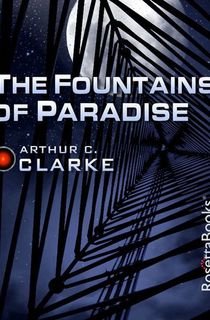
The Fountains of Paradise
This winner of both the Hugo Award and the Nebula Award follows Dr. Vennevar Morgan, an engineer with plans to build an elevator capable of bridging the gap between Earth and space. This elevator would have the ability to lift spacecrafts into orbit, making interstellar travel more time and cost effective by eliminating the need for rocket propulsion.
But the only proper foundation for such a project lies in the mountains inhabited by an ancient order of Buddhist monks. On top of combating the opposition of the monks, Morgan must also struggle against the political and financial complications of a project he knows could change the world.
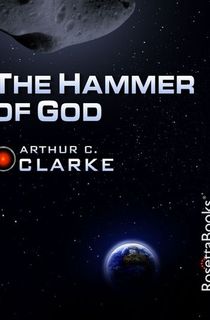
The Hammer of God
The year is 2109, and most of the world’s problems have been eradicated by rapidly advancing science and technology. But as a gigantic asteroid speeds toward the planet threatening to wipe out all life, this is one new problem that Earth may not be prepared for.
Upon discovery of the asteroid designated “Kali,” scientists scramble for a way to stop the imminent destruction of Earth. Yet on board the starship Goliath, Captain Robert Singh may be able to save mankind—but at the ultimate cost.
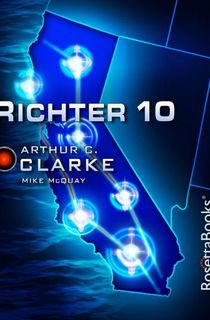
Richter 10
Co-written with Phillip K. Dick Award-winning author Mike McQuay, this science fiction thriller focuses on natural and political disasters. After Lewis Crane’s family died in an earthquake when he was just seven years old, he dedicated his life to studying how to protect others from similar tragedies.
Though he’s created technology capable of predicting earthquakes down to the minute, Crane wants to push further and prevent the disasters. As political uproar rises at his proposed methods, will he have the chance to stop the catastrophic earthquake heading for America?
A Space Odyssey

2001: A Space Odyssey
You didn't think we'd totally ignore these, did you?
Clarke wrote both the screenplay of 2001: A Space Odyssey and, concurrently, wrote the novelization. Both became science fiction classics that defined the genre. The plot follows the crew of the spacecraft Discovery on a mission to Saturn. The Discovery is controlled by an A.I. supercomputer called HAL that offers a glimpse into many of the challenges we face today about the perils of technology and ambition.
The film was nominated for four Academy Awards, including Best Story and Screenplay. Clarke went on to write three sequel novels, the first of which was also adapted into a film in 1984.

2010
While some readers might have preferred the open-ended conclusion provided in 2001: A Space Odyssey, the second installment in the series dives even more deeply into the themes established in the first book. A joint Soviet-American crew is sent to investigate what happened to the Discovery and its crew, particularly astronaut David Bowman. Among the new crew includes Dr. Chandra, who created the A.I. HAL 9000 and allows the reader to explore both the past and future of Clarke's futuristic world.
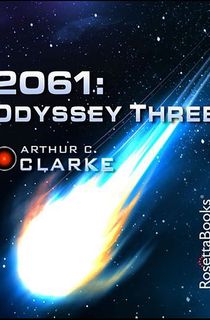
2061
Clarke's third book in the Odyssey series seems especially prescient today. It follows Heywood Floyd, who is chosen as a celebrity guest on a space mission similar to (but more ambitious than) the high-profile ventures we see now. But when one spaceship is hijacked, Heywood's vessel is diverted from its original mission to help save the people the crew. Heywood has already survived an encounter with HAL and the monolith-building race, but he's starting to tempt fate in the book that Kirkus Reviews called “the all-round best Odyssey so far.”
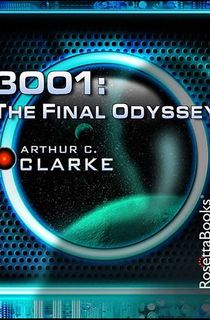
3001
As the title suggests, 3001: The Final Odyssey takes place a millennium after the events of 2001: A Space Odyssey. As the final entry in the Hugo-winning series, it's only right that Clarke brings the story full circle here by reintroducing a character who died in the first book. What the character discovers after a thousand years of technological advancement is enough to make the mind reel, and adapting to a new reality is a war in itself.

The Deep Range
In the near future, humanity has embraced the ocean and its full potential. Using sonar technology to collect marine resources, mankind knows no hunger. But ex-space-engineer Walter Franklin finds his attitude about his submarine patrol shift from boredom to an endless wonder as he explores the mysteries the deep has to offer.
But as his journeys plunge even deeper, he finds that the ocean holds the key to mankind’s place within nature—and Franklin himself is destined to be front and center in humanity’s future.
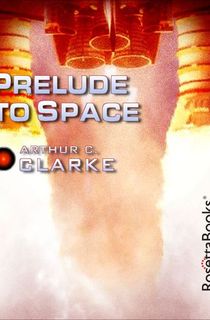
Prelude to Space
Earth’s first Lunar spacecraft, Prometheus, is preparing for launch. The ship is comprised of two parts—one meant to travel through outer space to the moon and back, and the other designed to propel that first component through the atmosphere and into orbit.
Traveling from London to the Australian base housing Prometheus, historian Dirk Alexson is in charge of documenting the fascinating process of interstellar travel. Though this novel was published in 1951, it bares a striking, almost prophetic, resemblance to the real-life events that would soon follow.
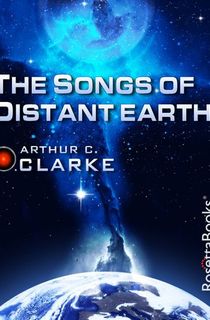
The Songs of Distant Earth
Published in 1986, Clarke identified The Songs of Distant Earth as his favorite of all his novels. Its origin can be traced back to a short story of the same name first published in 1958. To the colonists of the planet Thalassa, Earth is but a distant glimmer. The space settlers first arrived on this faraway ocean paradise long ago, sent via an embryonic seed pod in an effort to further the human race.
In the years since their arrival, the colonists founded a new society, one that is peaceful, loving, and free from the influence of religion and superstition. Today they are thriving. But their stability is thrown into jeopardy when the mega spaceship Magellan descends from the heavens—carrying with it one million Earth refugees fleeing their dying planet.
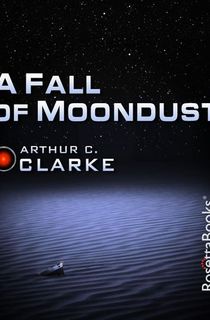
A Fall of Moondust
Clarke was nominated for a Hugo Award for this riveting space age survival tale published in 1961, which the Sunday Times hailed as "expertly told and cruelly exciting to the end." It’s the 21st century, and Earthlings have colonized the Moon for research as well as recreational purposes.
Intrepid and well-moneyed tourists travel to the gray satellite and set out on lunar cruises across the Sea of Thirst, a vast ocean-like body of dust so fine and dry it almost moves like water. The Selene is one such dust-cruiser that ferries tourists across this arid ocean.
Not long after setting off, a moonquake strikes, and the Selene sinks deep into the powder. With time running out and air in increasingly short supply, the crew and passengers must work together with what resources they have if they hope to escape.

Against the Fall of Night
Against the Fall of Night's poetic meditation on our place in the cosmos established Clarke as a bold new talent in sci-fi literature. Set far into the future, the narrative follows Alvin, the last child born of humanity in the ageless city of Diaspar.
According to city elders, there is nothing beyond Diaspar’s borders; invaders destroyed all other signs of life. Alvin, intensely curious, yearns to see the outside world for himself—and catches his first glimpse in the form of a mysterious stone with an inscription that promises a "better way."
The rock sends the young protagonist on a grand journey of discovery and revelation, one that reveals his people’s past as well as the future of all humanity. Against the Fall of Night was first published as a novella in 1948. Clarke expanded it into a novel published in 1953, and revisited it yet again in 1956’s celebrated The City and the Stars.

Islands in the Sky
Published in 1952 and geared toward teenage readership, Islands in the Sky is shining early example of the author’s capacity for inspiring wonder at the universe and integrating space age technology into his work.
At just sixteen years old, Roy Malcolm is wise beyond his years. The aviation expert is also enamored with space travel. So when he wins an all-expenses-paid trip to any part of Earth, Roy requests the Inner Station—after all, the satellite’s orbit still lies within Earth’s legal territory. Soon, the young cadet is rocketing through Earth’s atmosphere for an adventure of a lifetime.

Dolphin Island
Published in 1963, Dolphin Island charts an adventurous course across a terrestrial frontier—our oceans. In the dead of the night, a massive cargo hovership makes an emergency landing in the American Midwest. Transfixed by the vessel, and thirsty for adventure, young Johnny Clinton climbs aboard while the ship’s crew is distracted. Alas, Johnny’s joyride is short-lived.
Hours after taking off, the ship plummets from the sky once again, this time crashing into the Pacific Ocean. While the crew escapes, Johnny remains, stranded on the floating wreckage. All hope seems lost, until a dolphin pod appears and spirits Johnny away to a secret island hidden in the Great Barrier Reef. It is here that he meets Professor Kazan, a brilliant and peculiar scientist studying dolphin communication. But danger lies on the horizon, and soon Johnny’s strength is tested once again.
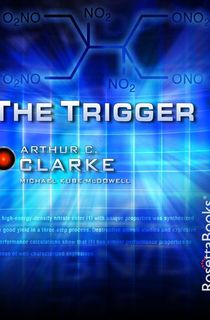
The Trigger
Clarke joins forces with Hugo Award-nominee Michael Kube-McDowell in this thought-provoking sci-fi thriller published in 1999.
In the near future, scientists strive to construct an anti-gravity device. Instead, the team accidentally invents an altogether different instrument—one that neutralizes weaponry. As the group works backward to understand their breakthrough in hopes of perfecting their device and using it for good, political power players move in to seize control of the so-called "Trigger."
Now they must navigate a treacherous web of gun lobbyists, politicians, and high-ranking officials of the military industrial complex—and ensure their creation does not fall into the wrong hands.
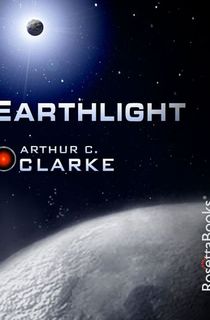
Earthlight
Clarke combines the suspense of a spy thriller with interstellar warfare in this political space opera published in 1955. In the 22nd century, humankind’s presence stretches across the solar system. Thriving settlements now exist on the Moon, Venus, and Mars, all united under an alliance known as the Federation.
Journeying into this space age political landscape is a government agent from Earth named Bertram Sadler. Sadler’s on the hunt for a suspected spy believed to be leaking information about precious heavy metal deposits on the Moon. As he searches for his elusive target, tensions flare between Earth and the Federation, and soon the whole solar system is on the brink of war.
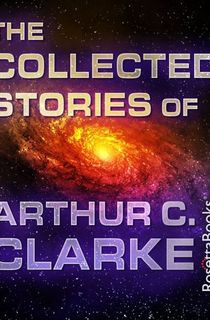
The Collected Stories of Arthur C. Clarke
This essential short story collection assembles over one hundred of Arthur C. Clarke’s shorter works, from his early narratives published in popular sci-fi magazines to the story seed that inspired 2001: A Space Odyssey and the more recent tales penned by Clarke in his later years. The result is a stunning portrait of Clarke’s extraordinary imagination and a fine primer on one of sci-fi’s most enduring voices.
Rama
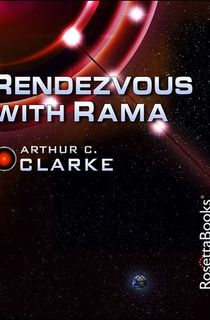
Rendezvous with Rama
One of the best sci-fi books ever written, Rendzvous with Rama won about every award possible in the early 1970s. The story's influence is still palpable today, as bestsellers like Liu Cixin and Andy Weir cite it as their favorite sci-fi book. The novel, which follows humankind's exploration of an asteroid-sized alien spaceship called Rama, exemplifies the mystery and wonder that can only exist on the sort of scale that science fiction stories provide.
Commander Bill Norton and his crew use low-gravity skybikes to explore the spaceship and search for meaning from the relics left behind.

Rama II
The second book in the Rama series starts 70 years after the events of the first. Armed with the knowledge that they received from their first encounter with alien spacecraft, humankind now faces a new ship. The Earth's best and brightest are assembled to face it, but in typical Clarke fashion the story offers plenty of philosophy, too. Petty squabbles and disagreements serve to skew the bigger picture, despite the revelations they uncover along the way.
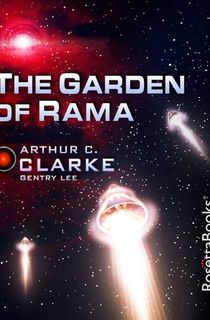
The Garden of Rama
Published in 1991 and co-written with Gentry Lee, Garden of Rama is the third book in Clarke’s Rama sequence. It picks up where 1989’s Rama II left off. Trapped in an alien ship hurtling through space, astronauts Nicole, Richard, and Michael cling to their humanity and strive to cultivate life in their bleak surroundings.
Nicole gives birth to five children, and together they raise the children over the course of their years-long journey. When the family finally reaches the Raman node, startling developments emerge, peeling back the mystery of the alien spacecraft’s true purpose and revealing dark truths about their fellow humans.
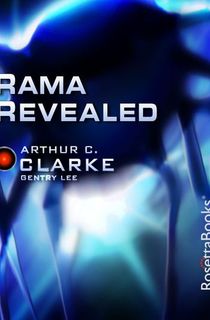
Rama Revealed
Readers will be relieved to find that the conclusion of the Rama series delivers the goods. Rama Revealed is a study in humanity and our flaws: As 2,000 humans find themselves trapped on a spaceship, they quickly form into a violent, authoritarian society. We see how this affects characters like Nicole and Richard Wakefield, who choose to flee into the bowels of the ship.
At the same time, however, we finally see something Clarke had only hinted at until now, which is the alien intelligences that created the mysterious relics discovered in the first three novels.

Expedition to Earth
For Clarke completists, or sci-fi fans searching for a less daunting journey through the author’s literary universe, check out Expedition to Earth. Released in 1953, Expedition to Earth is Clarke’s first published short story collection.
It includes classic tales like “The Sentinel”, “Loophole”, and “Exile of the Eons,” and serves as a clear reminder of Clarke’s prowess as a short story writer of mid-century science fiction.
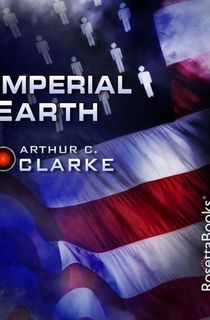
Imperial Earth
Clarke rockets readers to the year 2276 in this suspenseful political thriller, published to coincide with America’s 1976 bicentennial year. Duncan Makenzie is a member of Titan’s First Family, descended from the settlers who first colonized Saturn’s moon.
Now, he’s traveling back to Earth as a diplomatic guest of the United States during its quincentennial celebration of independence. Upon arriving, Makenzie is ushered into the parties and elite political circles of a futuristic Washington D.C. But the man from Titan harbors a secret—one that impacts the future of his genetic line.

The Sands of Mars
First published in 1951, The Sands of Mars presents a vivid vision of space travel years before the first manned flight into space. The narrative centers on Martin Gibson, a successful sci-fi author who climbs aboard the spaceship Ares on its maiden voyage to the red planet.
Ares is the world’s first spaceship built for passenger travel, and Gibson is on board as a guest. His mission is to document their journey to Mars and write a book about the experience. Clarke thoroughly engages with the hard science of space travel in this outstanding read, examining the inner workings of air pressure systems and oxygen delivery, the challenges of food cultivation and constructing adequate shelter on an alien planet, surviving that planet’s severe weather systems, and traveling across its unfamiliar landscape.
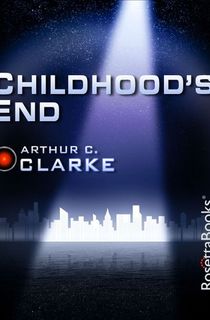
Childhood's End
Childhood's End, which retroactively won the Hugo Award for the year 1954, takes place in the near future as enormous spaceships begin to appear over Earth's largest cities. The aliens have come to conquer, but their demands are surprising: end war, poverty, and cruelty. It sounds like a dream, right?
Well, in the case of Clarke's classic, some things are too good to be true. Over time, humans see themselves deteriorate as their new overlords' agenda becomes increasingly clear. Here's what C. S. Lewis had to say about the work: "There has been nothing like it for years; partly for the actual invention, but partly because here we meet a modern author who understands that there may be things that have a higher claim on humanity than its own ‘survival.’”
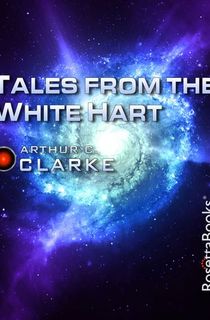
Tales from the White Hart
Clarke crafts a fanciful romp in this short story collection filled with "high diversion, amusement and amazement" (Los Angeles Times). Inspired by Irish author Lord Dunsany’s Jorkens stories, of which Clarke was a fan.
Tales from the White Hart invites readers into London’s White Hart Pub, where a roundtable of writers and scientists toast the night and spin fantastic tales. Of the storytellers you'll meet is one Harry Purvis, along with fictionalized versions of real-life sci-fi writers John Christopher (The Death of Grass), John Wyndham (The Day of the Triffids, The Midwich Cuckoos), and even Clarke himself as his penname alter ego Charles Willis.
Together, the fabulists attempt to outdo one another with their incredible narratives. Rich with fantasy and humor, Tales from the White Hart reveals a playful side of one of science fiction’s most studious minds.
This post is sponsored by Open Road Media. Thank you for supporting our partners, who make it possible for The Portalist to continue publishing the stellar stories you love.
Featured photo: Wikimedia Commons

